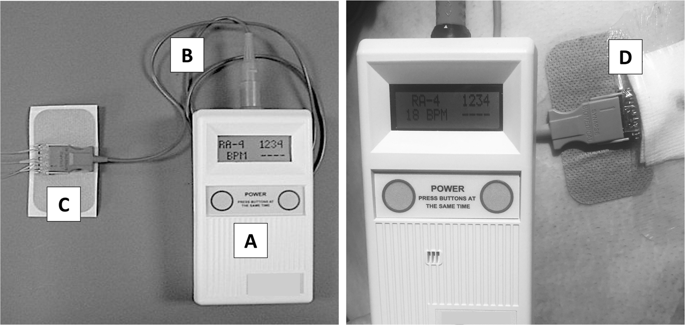当前位置:
X-MOL 学术
›
Spinal Cord Ser. Cases
›
论文详情
Our official English website, www.x-mol.net, welcomes your feedback! (Note: you will need to create a separate account there.)
Early use of an implantable diaphragm pacing stimulator for a child with severe acute flaccid myelitis-a case report.
Spinal Cord Series and Cases Pub Date : 2019-07-17 , DOI: 10.1038/s41394-019-0207-7 Travis L Edmiston 1, 2 , Mathew J Elrick 3 , Mark L Kovler 4 , Eric B Jelin 4 , Raymond P Onders 5 , Cristina L Sadowsky 1, 2
Spinal Cord Series and Cases Pub Date : 2019-07-17 , DOI: 10.1038/s41394-019-0207-7 Travis L Edmiston 1, 2 , Mathew J Elrick 3 , Mark L Kovler 4 , Eric B Jelin 4 , Raymond P Onders 5 , Cristina L Sadowsky 1, 2
Affiliation

|
Introduction
Acute Flaccid Myelitis (AFM) is a recently recognized, polio-like illness of children that can be functionally devastating. Severe cases can lead to ventilatory failure. Incomplete phrenic nerve injuries in other populations has been shown to respond to diaphragmatic stimulation. We therefore proposed an early assessment for incomplete denervation by laparoscopic direct stimulation of the diaphragm and placement of a diaphragmatic pacing system to enhance diaphragm function.
Case presentation
A 3 year-old girl presented with AFM with clinically and electrodiagnostically severe involvement of all four limbs and muscles of respiration. Direct stimulation of the diaphragm demonstrated contraction and a diaphragmatic stimulator was placed at 3 weeks post presentation. The patient was immediately able to tolerate short bouts of reduced ventilation settings. Electromyography via the pacing wires demonstrated intact motor units consistent with partial denervation/reinnervation in the left hemidiaphragm, and no motor units in the right hemidiaphragm. At three months, she tolerated 6 h of pacing on pressure support setting. At 5 months she demonstrated larger tidal volumes with active pacing than without.
Discussion
In our experience, AFM patients who require chronic ventilator support are rarely able to be weaned. Despite clinical and surface electrodiagnostic evidence of complete phrenic nerve involvement, the patient's diaphragm responded to direct stimulation. The patient preferred pacing over non-pacing times and showed improved ventilatory ability with pacing as opposed to without, though remains ventilator-dependent. These findings support augmentation of diaphragm function and possible enhanced recovery of spontaneous function.
中文翻译:

早期使用植入式隔膜起搏刺激器治疗患有严重急性弛缓性脊髓炎的儿童 - 病例报告。
简介 急性弛缓性脊髓炎 (AFM) 是一种最近被发现的、类似脊髓灰质炎的儿童疾病,可能会破坏儿童的功能。严重者可导致呼吸衰竭。其他人群的不完全膈神经损伤已被证明对膈肌刺激有反应。因此,我们提出通过腹腔镜直接刺激膈肌和放置膈肌起搏系统来增强膈肌功能来早期评估不完全去神经支配。病例介绍 一名 3 岁女孩出现 AFM,临床和电诊断均严重累及所有四肢和呼吸肌肉。直接刺激膈肌显示收缩,并在就诊后 3 周放置膈肌刺激器。患者立即能够忍受短暂的降低通气设置。通过起搏线进行的肌电图显示,运动单位完整,与左侧膈肌部分去神经/神经支配一致,而右侧膈肌没有运动单位。三个月时,她在压力支持设置下耐受了 6 小时的起搏。5 个月时,她表现出主动起搏时的潮气量比不主动起搏时的潮气量更大。讨论 根据我们的经验,需要长期呼吸机支持的 AFM 患者很少能够脱机。尽管临床和表面电诊断证据表明膈神经完全受累,但患者的膈肌对直接刺激有反应。与非起搏时间相比,患者更喜欢起搏时间,并且与没有起搏的情况相比,起搏时的通气能力有所改善,但仍然依赖呼吸机。这些发现支持增强膈肌功能并可能增强自发功能的恢复。
更新日期:2019-11-18
中文翻译:

早期使用植入式隔膜起搏刺激器治疗患有严重急性弛缓性脊髓炎的儿童 - 病例报告。
简介 急性弛缓性脊髓炎 (AFM) 是一种最近被发现的、类似脊髓灰质炎的儿童疾病,可能会破坏儿童的功能。严重者可导致呼吸衰竭。其他人群的不完全膈神经损伤已被证明对膈肌刺激有反应。因此,我们提出通过腹腔镜直接刺激膈肌和放置膈肌起搏系统来增强膈肌功能来早期评估不完全去神经支配。病例介绍 一名 3 岁女孩出现 AFM,临床和电诊断均严重累及所有四肢和呼吸肌肉。直接刺激膈肌显示收缩,并在就诊后 3 周放置膈肌刺激器。患者立即能够忍受短暂的降低通气设置。通过起搏线进行的肌电图显示,运动单位完整,与左侧膈肌部分去神经/神经支配一致,而右侧膈肌没有运动单位。三个月时,她在压力支持设置下耐受了 6 小时的起搏。5 个月时,她表现出主动起搏时的潮气量比不主动起搏时的潮气量更大。讨论 根据我们的经验,需要长期呼吸机支持的 AFM 患者很少能够脱机。尽管临床和表面电诊断证据表明膈神经完全受累,但患者的膈肌对直接刺激有反应。与非起搏时间相比,患者更喜欢起搏时间,并且与没有起搏的情况相比,起搏时的通气能力有所改善,但仍然依赖呼吸机。这些发现支持增强膈肌功能并可能增强自发功能的恢复。


























 京公网安备 11010802027423号
京公网安备 11010802027423号